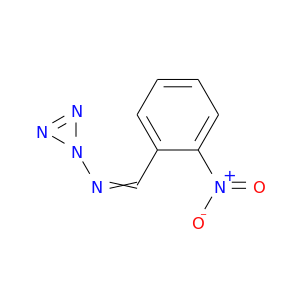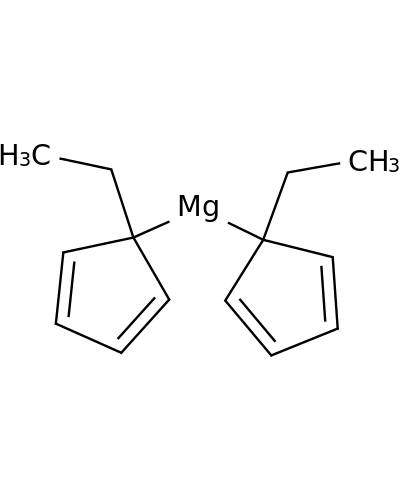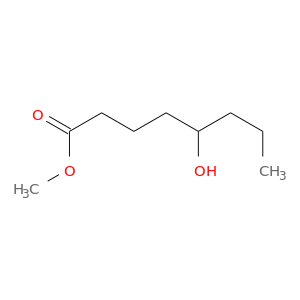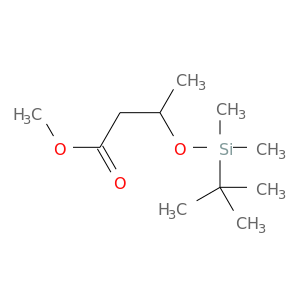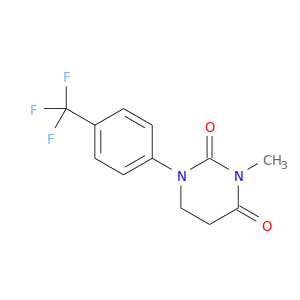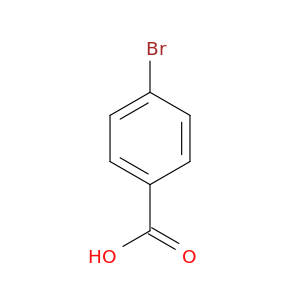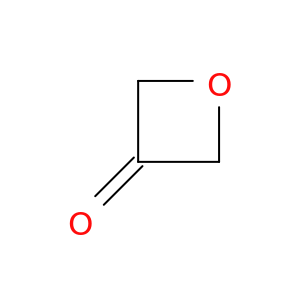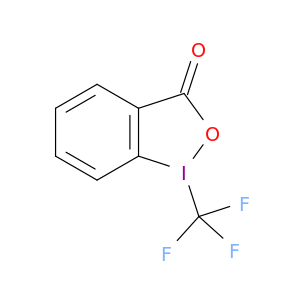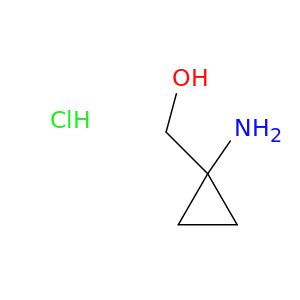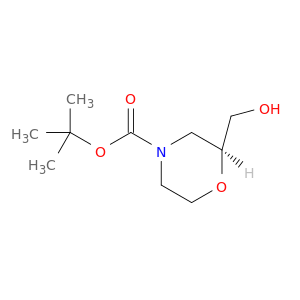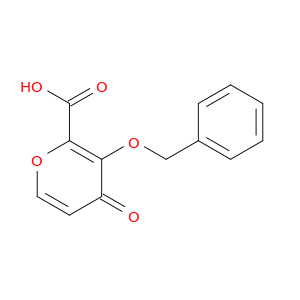200,000+ products from a single source!
sales@angenechem.com
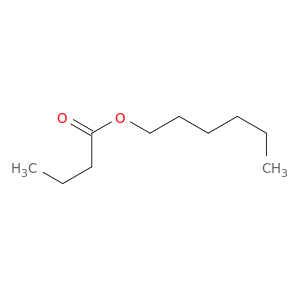
2639-63-6 | Butanoic acid, hexyl ester
CAS No: 2639-63-6 Catalog No: AG002T0X MDL No:MFCD00048884
Product Description
Catalog Number:
AG002T0X
Chemical Name:
Butanoic acid, hexyl ester
CAS Number:
2639-63-6
Molecular Formula:
C10H20O2
Molecular Weight:
172.2646
MDL Number:
MFCD00048884
IUPAC Name:
hexyl butanoate
InChI:
InChI=1S/C10H20O2/c1-3-5-6-7-9-12-10(11)8-4-2/h3-9H2,1-2H3
InChI Key:
XAPCMTMQBXLDBB-UHFFFAOYSA-N
SMILES:
CCCCCCOC(=O)CCC
EC Number:
220-136-6
UNII:
74HY6P24G7
FEMA Number:
2568
Properties
Complexity:
110
Compound Is Canonicalized:
Yes
Covalently-Bonded Unit Count:
1
Defined Atom Stereocenter Count:
0
Defined Bond Stereocenter Count:
0
Exact Mass:
172.146g/mol
Formal Charge:
0
Heavy Atom Count:
12
Hydrogen Bond Acceptor Count:
2
Hydrogen Bond Donor Count:
0
Isotope Atom Count:
0
Molecular Weight:
172.268g/mol
Monoisotopic Mass:
172.146g/mol
Rotatable Bond Count:
8
Topological Polar Surface Area:
26.3A^2
Undefined Atom Stereocenter Count:
0
Undefined Bond Stereocenter Count:
0
XLogP3:
3.3
Literature
| Title | Journal |
|---|---|
| Identification and field evaluation of pear fruit volatiles attractive to the oriental fruit moth, Cydia molesta. | Journal of chemical ecology 20120801 |
| Aliphatic esters as targets of esterase activity in the parsnip webworm (Depressaria pastinacella). | Journal of chemical ecology 20120201 |
| Headspace-solid phase microextraction coupled to gas chromatography-combustion-isotope ratio mass spectrometer and to enantioselective gas chromatography for strawberry flavoured food quality control. | Journal of chromatography. A 20111021 |
| Identification of fruit volatiles from green hawthorn (Crataegus viridis) and blueberry hawthorn (Crataegus brachyacantha) host plants attractive to different phenotypes of Rhagoletis pomonella flies in the southern United States. | Journal of chemical ecology 20110901 |
| Identification of host fruit volatiles from three mayhaw species (Crataegus series Aestivales) attractive to mayhaw-origin Rhagoletis pomonella flies in the southern United States. | Journal of chemical ecology 20110901 |
| Attraction and antennal response of the common wasp, Vespula vulgaris (L.), to selected synthetic chemicals in New Zealand beech forests. | Pest management science 20090901 |
| Bioassay screening of the essential oil and various extracts from 4 spices medicinal plants. | Pakistan journal of pharmaceutical sciences 20090701 |
| Ethyl 1-(4-methoxy-phen-yl)-2-nitro-3-[4-oxo-3-phenyl-1-(4-methoxy-phen-yl)azetidin-2-yl]-2,3,10,10a-tetra-hydro-1H,5H-pyrrolo[1,2-b]isoquinoline-10a-carboxyl-ate. | Acta crystallographica. Section E, Structure reports online 20080501 |
| Cloning, expression, and characterization of a Baeyer-Villiger monooxygenase from Pseudomonas fluorescens DSM 50106 in E. coli. | Applied microbiology and biotechnology 20070101 |
| Chemesthesis from volatile organic compounds: Psychophysical and neural responses. | Physiology & behavior 20060730 |
| Attraction of male European tarnished plant bug, Lygus rugulipennis to components of the female sex pheromone in the field. | Journal of chemical ecology 20050601 |
| Investigation of long-range female sex pheromone of the European tarnished plant bug, Lygus rugulipennis: chemical, electrophysiological, and field studies. | Journal of chemical ecology 20040801 |
| Criteria to design green enzymatic processes in ionic liquid/supercritical carbon dioxide systems. | Biotechnology progress 20040101 |
| Male-produced anti-sex pheromone in a plant bug. | Die Naturwissenschaften 20031101 |
| Volatile compounds released by disturbed and calm adults of the tarnished plant bug, Lygus lineolaris. | Journal of chemical ecology 20030401 |
| Identification of female sex pheromone of the rice leaf bug, Trigonotylus caelestialium. | Journal of chemical ecology 20011201 |
Related Products
Featured Products
© 2019 Angene International Limited. All rights Reserved.


